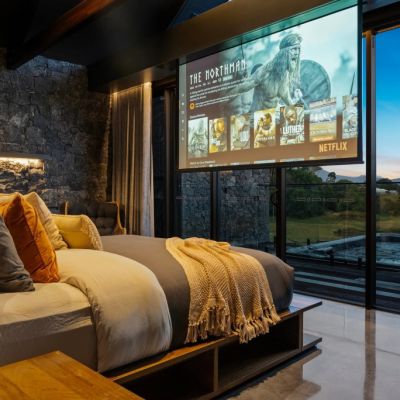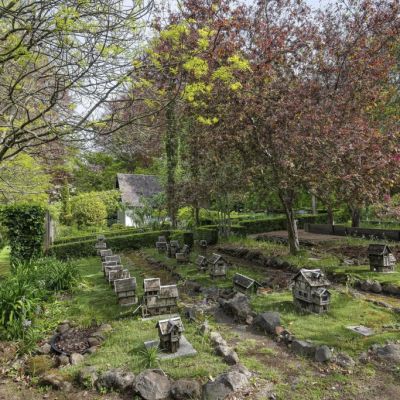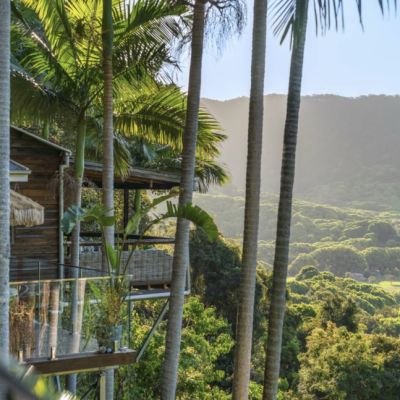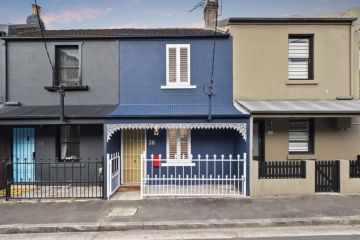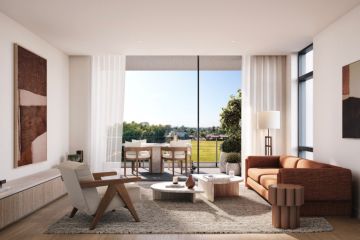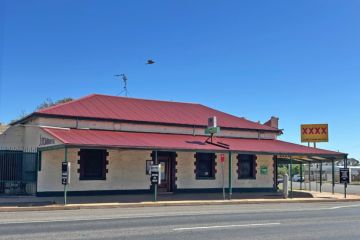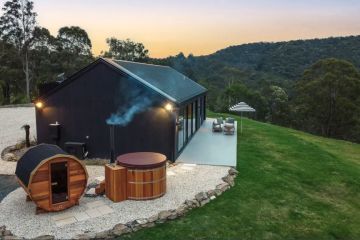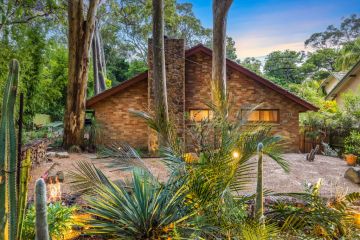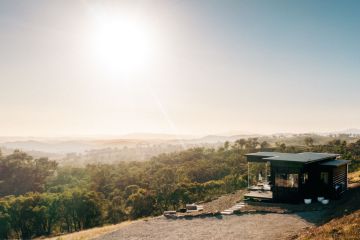1860s boot shop or five-bedroom home? Tasmania's Cordwainer House hits the market
- Owners: Craig Zimitat and Brett Goodsell
- The property: Mid-1800s home restoration
- Address: 33 West Barrack Street, Deloraine, Tasmania
- Price guide: Offers over $2.9 million
Much has changed in Tasmania since the 19th century, but with the grand five-bedroom Cordwainer House, you can have the best of both worlds: a slice of pure history, combined with the comforts of some very modern technology.
In the mid-1800s, William Abey, a bootmaker who lived in the Georgian merchant house and plied his trade in the workshop, would likely have arrived home by horse and cart. Now, thanks to a five-year restoration project by owners Brett Goodsell and Craig Zimitat, future residents will be able to glide their electric car into the driveway and enjoy mod cons such as solar power.
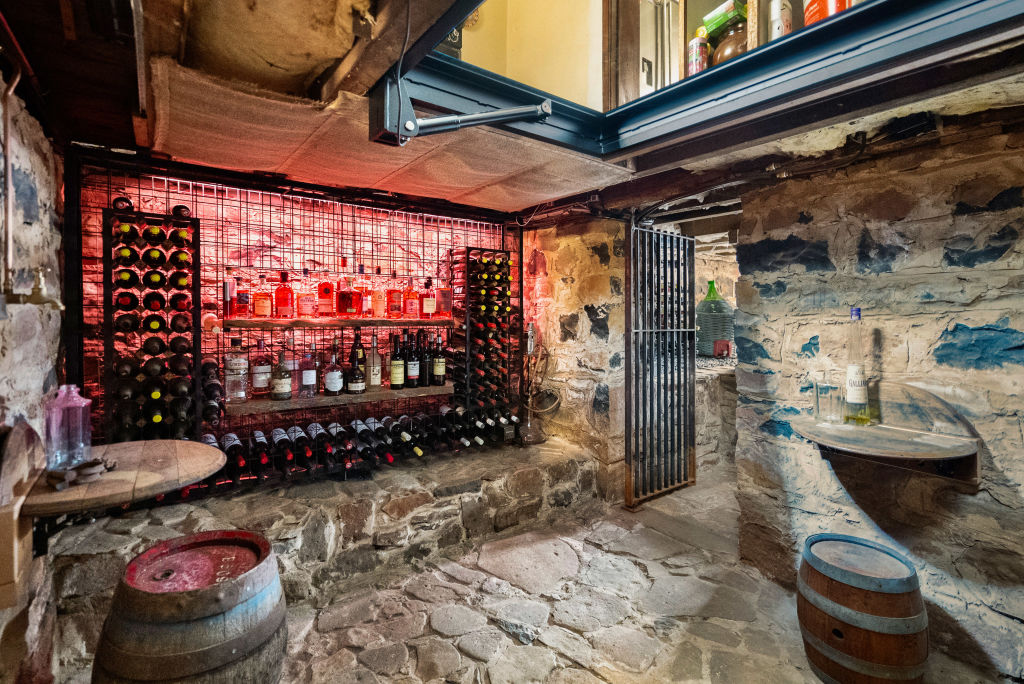
“Sustainability has always been very important to us,” Goodsell says. “So one of the things that we liked about the property is that it already had the remnants of an orchard, which we’ve built on since we’ve been here.
“We grow most of our vegetables and fruit here. We’ve got the solar farm happening, where we produce most of our power, a Tesla battery, and a car charger as well.”
It’s the latest incarnation of a property steeped in history.
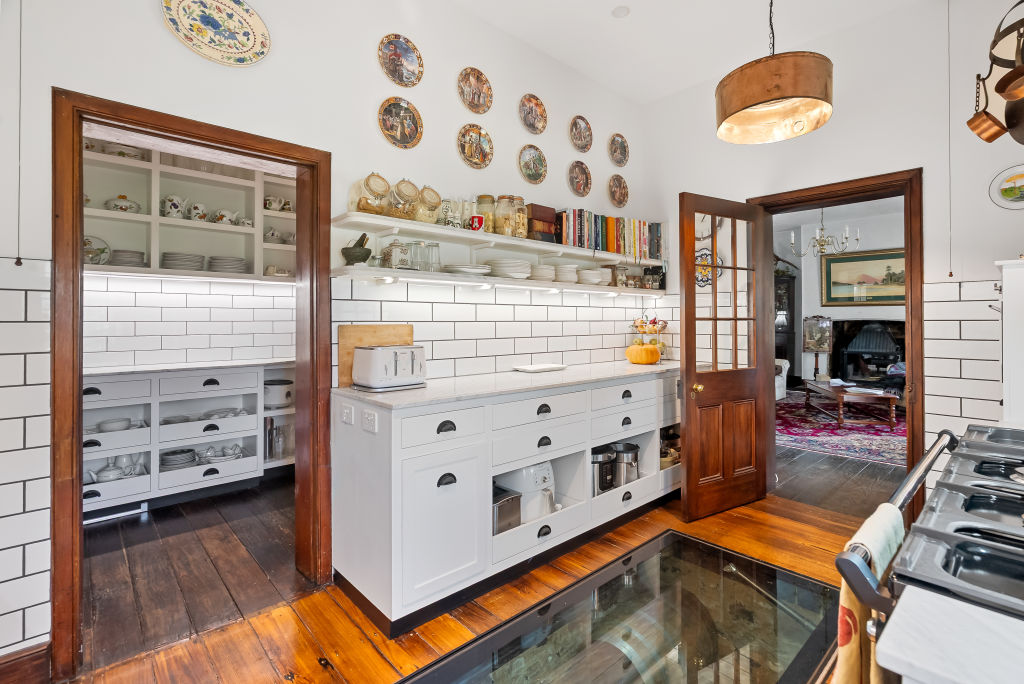
At the height of the Spanish flu pandemic in 1918-1920, it was a maternity and general hospital. Records show at least 60 babies were born there, including a now-elderly man who still lives locally and has visited Cordwainer House.
Goodsell and Zimitat bought the property in the midst of another global pandemic, COVID-19.
“There were delays, blowouts and costs, and at that time, too, we had to be separated because Craig was stuck in Western Australia for six months, and I was stuck here,” Goodsell says.
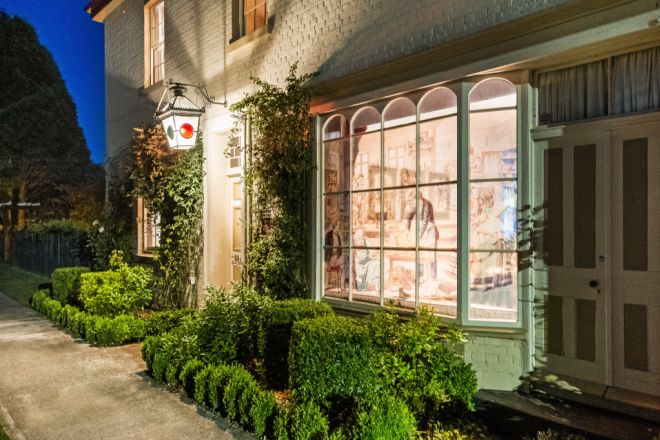
The pair have since restored the home with the help of specialised tradespeople, including a tradesman in his early 80s.
They have retained many of its heritage features, including a rare original 1860s light above the front door.
Zimitat says they also tried to give appropriate recognition to the former bootmaker’s shop during its restoration.
“We haven’t tried to hide it or disguise it,” he says. “The shopfront glass has a bootmaker’s transfer on, so it looks like you’re going into a Victorian boot shop.”
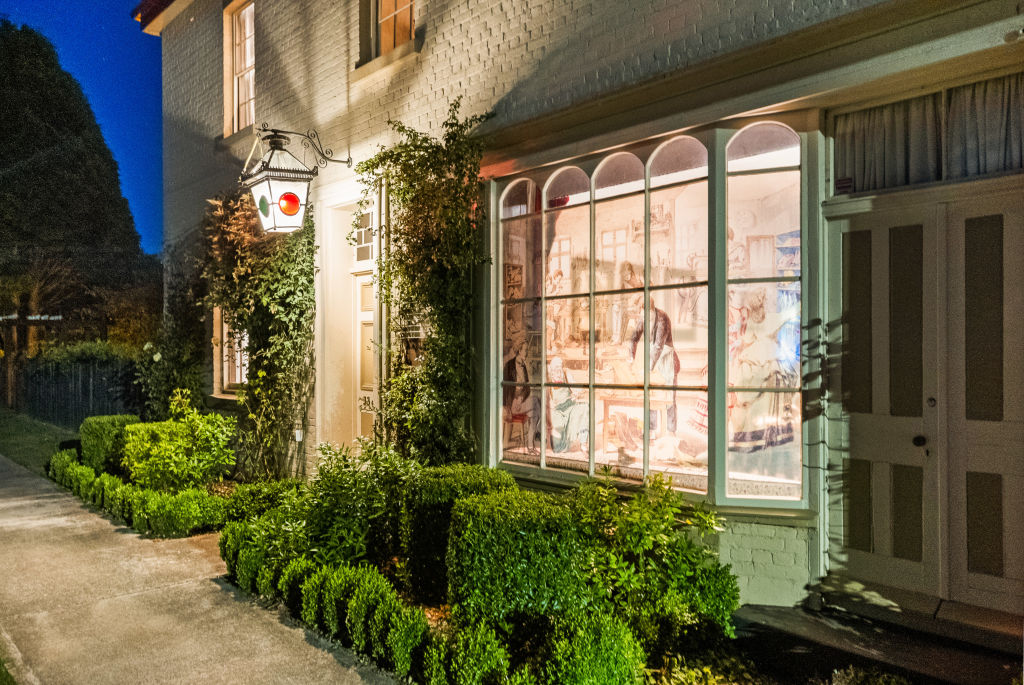
One of the home’s standout features is the cellar beneath the kitchen, accessible via a glass opening.
Along with their favourite tipples, Goodsell and Zimitat also use the cellar to preserve fruit picked from their orchard.
It’s not the couple’s first restoration, having already tackled about 10 houses around Australia, including another heritage property in Tassie.
They live in each of them during restorations, which Zimitat says gives a “better feel for the house and how it works”.
Along the way, plans often change.
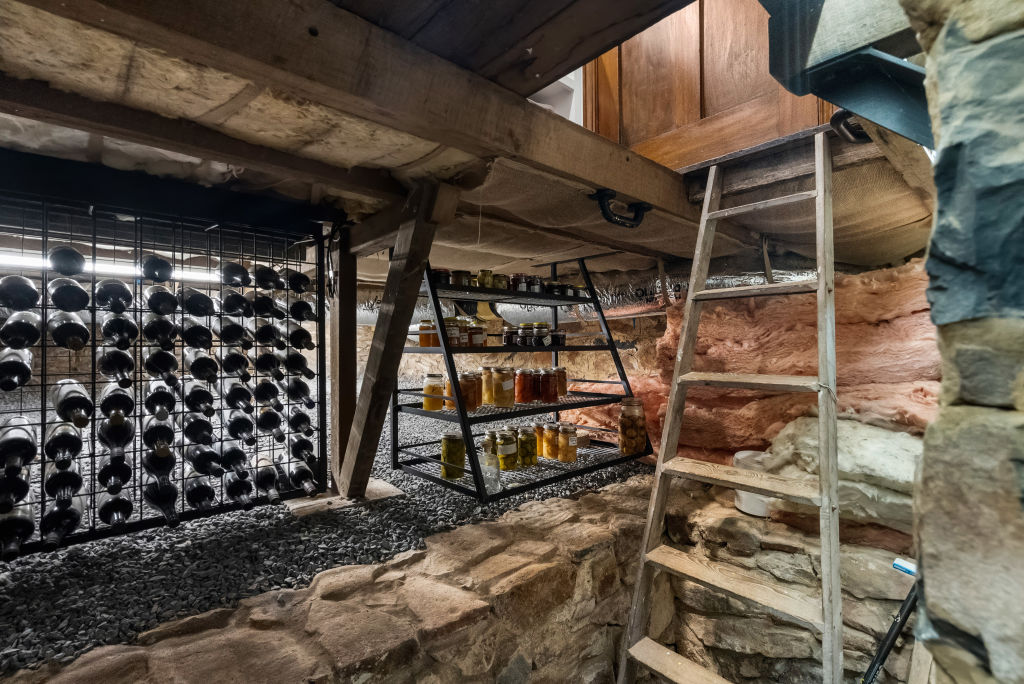
For example, they had originally planned to plaster only one room, but wound up doing all 10.
“Heritage plasterers did most of that [Spanish plaster] work,” Zimitat says. “We did the polishing with the wax polishing at the end to give it that shine.”
The original floors have been waxed and polished using traditional processes.
“When you’re walking on waxed and polished timber floors with plaster walls, tall ceilings, fireplaces, you have a sense of the history of the house while you’re in it,” Zimitat says.
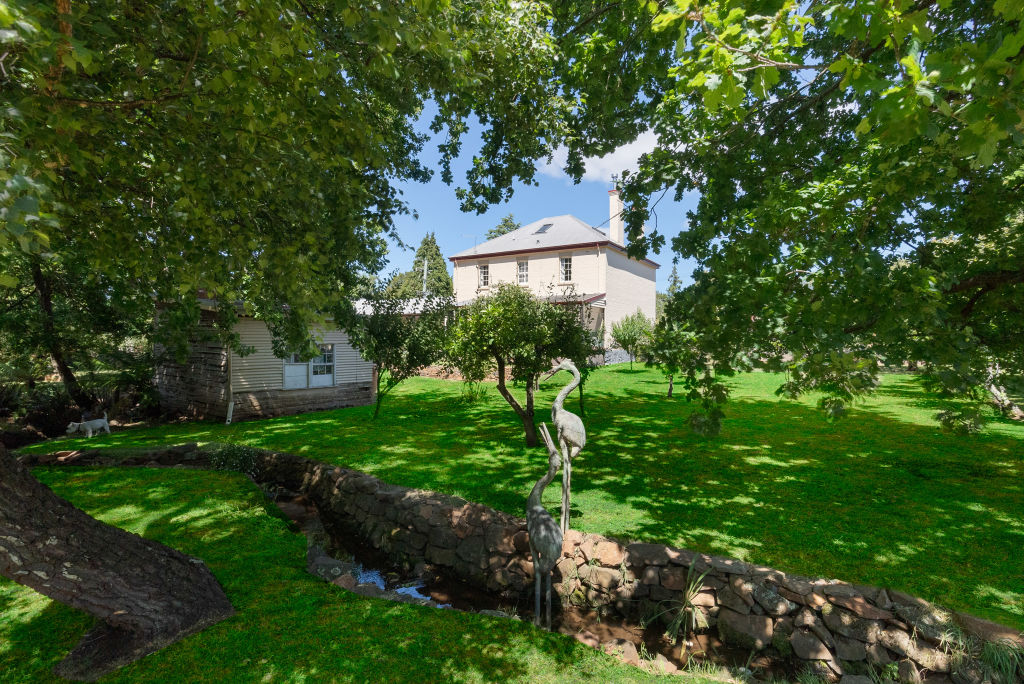
Outside, the sprawling gardens, which the pair have spent many hours improving, include a private creek. Wildlife such as platypus, cockatoos and pademelons can be regularly spotted.
There’s also an outdoor bath, a giant chess set, and numerous places to entertain or just enjoy a quiet cuppa.
The owners admit it will be hard to leave the property, with ageing parents in Queensland forming part of their decision to be more mobile.
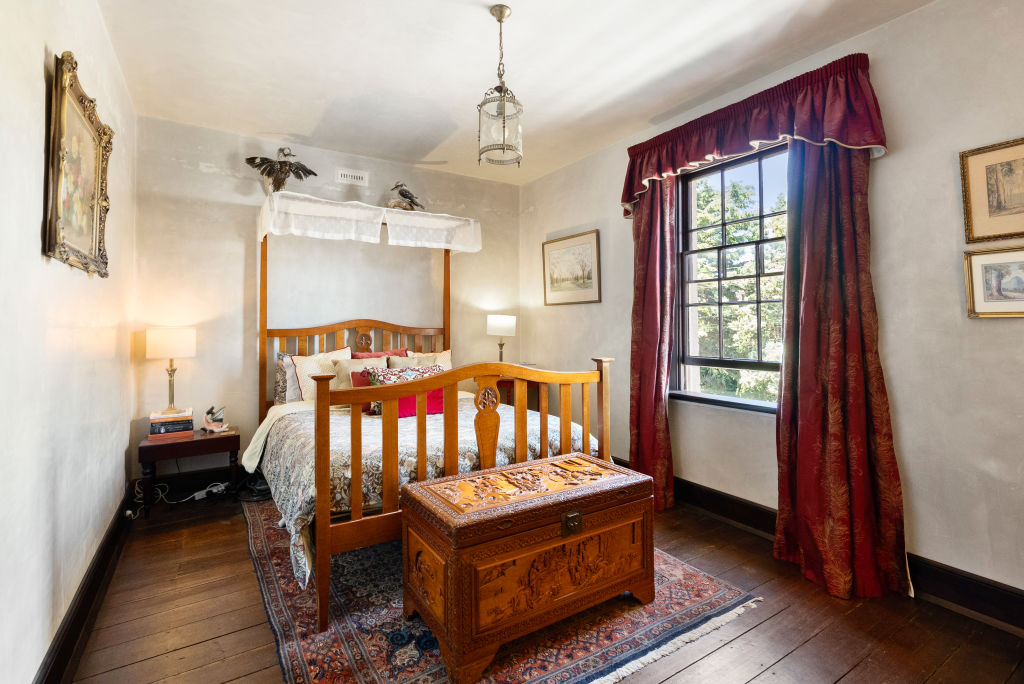
Goodsell says they’re very proud of their restoration efforts.
“When so many people stop, whether it’s driving past on the street, or that do visit the house and they’re gushing over it, you just feel this enormous sense of pride,” he says.
“I don’t expect everyone to like what we’ve done, but I haven’t heard anyone say a negative thing about it. They all just think it’s amazing.”
Having fallen hard for Tasmania, finding another house to love there – and put their stamp on – is by no means out of the question.
We recommend
We thought you might like
States
Capital Cities
Capital Cities - Rentals
Popular Areas
Allhomes
More
- © 2025, CoStar Group Inc.
